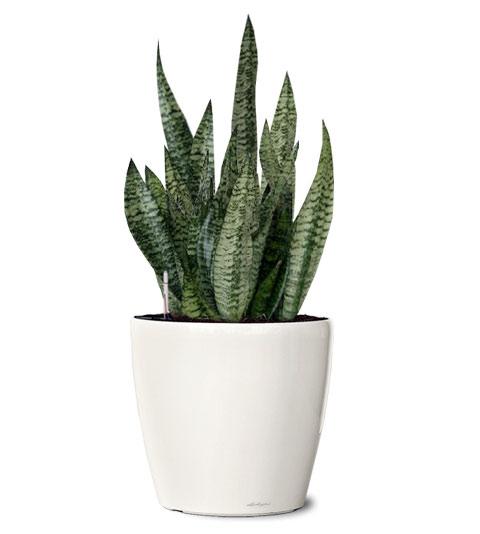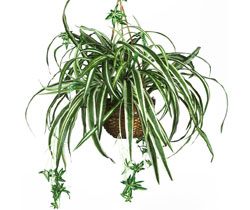What kind of hardy plant flourishes with a lot of good intentions and a little bit of benign neglect? There are several plant varieties that could work quite well.
I’m not saying you meant to kill that thoughtful housewarming plant, but the fact is that a month ago you had a flourishing orchid specimen… and today you have a floundering patch of brown welcoming some new flies to the coffee table.

There are several contenders for Best Drought-Resistant Houseplant, and the plant you want will depend not only on its qualities, i.e. how much water and sunlight the plant needs, but also on the capabilities of the person (supposedly) caring for said plant. Let’s dive in.
1. First Choice: A Succulent, Of Course!
If you are looking for a low-maintenance and easy-to-care-for plant to give your home a splash of colour and a breath of fresh air, there are few options better than a desert-loving cactus or burn-soothing aloe vera plant.
Why? Well, think about what characteristics define a cactus, a prime example of a succulent:
- Succulents are low-maintenance, tough, lush, and beautiful additions to your home.
- Hues of greens and stunning textures make an interesting accent to your interior design.
- Forgetting to water it is a good thing.
- Where to Set it and Forget It: Set it in a sunny window or a bright room and let it do its thang.

Try Some Hen and Chicks (Sempervivum):
- Each plant lives around three years and produces many offshoots before blooming and then dying. One large succulent (aka the mother “Hen“) produces tiny offshoots (aka the “Chicks“), and they all grow together in one mound.
- For indoor cultivation of Hens and Chicks, a mixture of garden soil and sand works best. Use half garden soil and half sand, then mix thoroughly and pour into pots. Many recommend adding drainage (pebbles, stones, etc.) to the bottom of the pot.
- Hens and Chicks can do without water for a long time, but it will not grow as well with continual drought conditions. They also need a lot of sun!
- Not much soil is needed; outside sempervivum will do fine in rocky crevices, cracks, walls, between paving stones, and in shallow containers.
Low-Maintenance Love with Low-Light Succulents
Things to Consider:
- Not all succulents love the indoor world, so choose a variety that prefers shade or low light and not full sun for its main meal.
- In general, succulents that have bright colours (reds, purples, and oranges) don’t do well indoors.
- Aloe vera is a popular species with which you are likely familiar. Bonus: aloe vera can survive in low light settings and low humidity rooms, as it prefers dry air. Also, aloe is a beneficial medicinal plant.
2. How About A Snake (Plant)?
Or maybe you forget to water your green friends once or twice a week, or you’re away on work trips or you have some other excuse for neglecting your relatively low-maintenance flora: this plant is for you.

Sansevieria (commonly known as the snake plant or “mother-in-law’s tongue”) is a very tolerant plant that is hard to kill; excellent. It can survive low light levels, drought, and generally doesn’t mind being ignored. Sounds like an ideal partner for the frequent traveller.
- Cleans the air and doesn’t care if you water it enough [see: NASA Study].
- Where to Let it Be: Snake Plants can tolerate full sun but indirect light is where it’s at. Snake plant can easily rot so make sure the soil is well-drained and don’t water it too much, especially in winter, and allow the soil to dry in between waterings. As they originate from arid deserts, these plants do well in sandier soils.
- Snake Plants don’t like too much water (as in, they don’t like too frequent watering. Make sure you water it enough each time) and they don’t like the cold. So keep your snake plant indoors over winter.
3. Plant Spiders You Want in Your House Over the Winter

darker green leaves than the Vittatum variety,
showing off its baby shoots aka spider babies.
Vittatum is the most popular, lighter green, perennial spider plant variety. This ornamental (look but don’t eat) plant has the recognizable creamy and broad vertical stripes punctuating their slightly curved, hangy-down, medium green leaves. This variety can expand 1-2 feet in length and width, and does well indoors in a hanging basket. You can root and share your spider babies — the spiderettes, the extensions of new growth which cascade down from the container.
- Grow this beautiful drought-tolerant hanging plant in well-drained soil, under light shade.
- Suitable for a dark-ish apartment with a bit of natural light but without a south-facing window.
4. Desert-Loving Herb Plants For the Win?
What plants are great for those who travel often or have busy schedules (or simply forget to water their plants), but still want the benefits of a plant-filled home? Fill your windowsills and patios with herbs! This way, you can eat the plants before embarking on a long trip — sustenance and convenience. Plus they are cute and little.
Bonus: Oregano and Rosemary are drought-resistant herbs you can grow indoors. They tolerate a little neglect and like their environment hot and humid, and soil dry. The downside is they love the sun, so your home or room needs a window offering lots of sunshine. Otherwise, leave ’em and enjoy their delicious accents and aromas.
Oregano
- Container growing: Potted oregano can be grown indoors in a bright, sunny window or under fluorescent lights.
- Oregano grown in wet soil or wet weather may suffer from root rot or damping off, so ensure the soil dries thoroughly between waterings.
- It is better to water thoroughly and less often. If you have a container, water until the water comes out of the drainage holes in the bottom of the container.
- Oregano can thrive in poor or sandy soil that is well-drained.
Rosemary
- Similar requirements as oregano.
- Needs a south-facing window and well-draining soil.
- Likes dry soil but humid air, so mist the leaves every once in a while.
- Let the soil completely dry between watering.
5. Something Different: Grow a Lemon Tree Indoors
A lemon tree?! You might think it impossible to have a lemon tree in the great white north, but in reality, we can all have thriving lemon trees in our homes. If you can accommodate this tree growing 3-5 feet tall, why not give it a try? Lemon citrus is useful in all sorts of situations: slice in a hot tea with some of your own home-grown ginger, squeeze into your cold glass of water for daily drinking, slice on your cedar plank salmon, extract the citrus essential oil and freshen up the place… do it just to prove that it can be done….
- Lemon trees are beautiful houseplants that thrive in all seasons—even winter.
- When put in the correct container, these plants will do just fine in the winter while they wait out the cold.
- Container lemon trees need high humidity.
- Water thoroughly but only once or twice a week, and make sure the tree isn’t sitting in water for too long.
Just Pick a Plant You Like
It may take you (or your friend…) a while to cultivate your skills for growing and nurturing plants, but let each day that nothing dies, a day to encourage you.
Houseplants brighten up any room, filter the air in your home, and uplift your mood without really trying. So when it comes to creating your own indoor garden, don’t let a few broken plants keep you down; soon you’ll be boasting a living indoor garden or a single live plant that persists despite your best efforts! Or your lack of trying, anyway.
